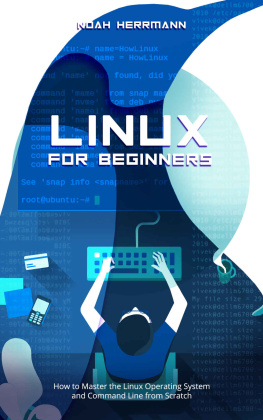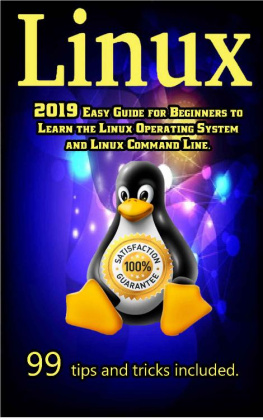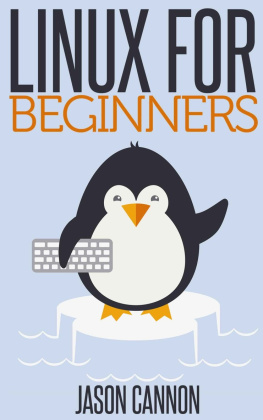Copyright 2021 by Noah Herrmann- All rights reserved.
This document is geared towards providing exact and reliable information regarding the topic and issue covered. The publication is sold with the publisher being not required to render accounting, officially permitted, or otherwise, qualified services. If advice is necessary, legal or professional, a practiced individual in the profession should be ordered.
- From a Declaration of Principles accepted and approved equally by a Committee of the American Bar Association and a Committee of Publishers and Associations.
In no way is it legal to reproduce, duplicate, or transmit any part of this document in either electronic means or printed format. Recording of this publication is strictly prohibited and any storage of this document is not allowed unless with written permission from the publisher. All rights reserved.
The information provided is stated to be truthful and consistent, in that any liability, in terms of inattention or otherwise, by any usage or abuse of any policies, processes, or directions contained within is the solitary and utter responsibility of the recipient reader. Under no circumstances will any legal responsibility or blame be held against the publisher for any reparation, damages, or monetary loss due to the information herein, either directly or indirectly.
Respective authors own all copyrights not held by the publisher.
The information herein is offered for informational purposes solely and is universal as such. The presentation of the information is without a contract or any guarantee assurance.
The trademarks used are with no consent, and the publication of the trademark is without permission or backing by the trademark owner. All trademarks and brands within this book are for clarifying purposes only and are owned by the owners themselves, not affiliated with this document.
Table of Contents
Introduction
Chapter 1: What Is Linux About?
1.1 What Is an Operating System?
1.2 Linux as an Operating System
1.3 From UNIX to Linux
1.4 Systems Architecture of Linux
1.5 File Hierarchy Structure of Linux
1.6 The Process Architecture of Linux
Chapter 2: Decide Your Distribution
2.1 What is a Linux Distribution?
2.2 How to choose the right distribution for you?
2.3 Ubuntu
2.4 Linux Mint
2.5 MX Linux
2.6 Open SUSE
2.7 Fedora
2.8 Debian
2.9 Arch Linux
2.10 Slackware
2.11 Gentoo
2.12 CentOS
Chapter 3: Install Linux
3.1 What Is a Virtual Machine?
3.2 Installing Linux on Physical Hardware
3.3 Installing Linux on Virtual Machines on Windows 10
3.4 Installing Linux On Virtual Machines On MacOs
Chapter 4: Linux Shell
4.1 What is Shell?
4.2 Gaining Access to Shell
4.3 Types of Shell
4.4 Shell Scripting
4.5 Basic Command Line Editing
Chapter 5: Linux Commands
5.1 System Control Commands
5.2 Function Commands
5.3 File System Commands
5.4 Becoming Superuser (Root)
5.5 Working with the Date and Time
Chapter 6: Basic Network Administration
6.1 Networking 101
6.2 Linux Cloud Hosting
6.3 The Network Topology
6.3.1 Understanding TCP/IP of LAN
6.3.2 Understanding Wireless Networks
a. Main Protocols of the Internet
6.4 Diagnostic Commands and Files
Chapter 7: Alternatives to Windows Applications
7.1 Microsoft Office Substitute
7.2 MS Notepad Substitute
7.3 Internet Explorer/Microsoft Edge Substitute
7.4 Photoshop Substitute
7.5 Movie Maker Substitute
7.6 Windows Media Center Substitute
7.7 Adobe Acrobat Reader Substitute
Conclusion
Introduction
Linux is a free and open-source operating system based on the UNIX and PSOIX programming languages. It is free to download and use. It was built on the Intel x86 paradigm. In reality, compared to the rest of the operating systems, Linux has the most extensive user base.
This is why a Linux-based computer or system is fast and is often even compared to those incredible supercomputers. Unlike other operating systems, Linux can be customized to any form of the system used, while other operating systems are designed for a particular computer type.
This is due to the open-source software collaboration, capable of supporting different libraries and directories.
The next step is to learn more about writing and editing shell scripts and developing automation scripts that will help you get more out of Linux.
The Linux operating system (OS) is not well recognized by the average user, even though it is the most commonly used platform, with applications for Android phones, smartwatches, refrigerators, washing machines, video game consoles, and DVRs.
When you remember how Linux came to be and how it continues to grow, it is awe-inspiring. Linux has evolved from its humble beginnings as a hobby for one human, Linus Torvalds of Finland, to a full-fledged operating system with features that rival any commercial Unix operating system. To top it off, Linux along with all of its source code is free. All you have to do is to download it from the Internet or purchase it on CDs or DVDs from one of the many Linux CD sellers for a small fee.
The adage "you get what you pay for" does not apply to Linux. Linux is not a slouch for performance, functionality, and reliability, even though it is free. The way Linux is designed and modified has a lot to do with its robustness. Developers from all over the world work together to add new functionality. Users update incremental versions daily and test them in several device configurations. Linux revisions are subjected to much more extensive beta testing than consumer applications.
The number of Linux users has increased exponentially since Linux kernel 1.0 on March 14, 1994. Many Linux distributions make installation and usage of the operating system, software, and installation tools easier. Some Linux distributions are sold and subsidized commercially, while others are still freely available.
Unlike many other free downloadable software programs, Linux comes with a wealth of online documentation on topics like downloading and configuring the operating system on several PCs and peripherals. A few hard-core Linux users are proficient enough to use Linux effectively solely based on online documentation. However, a much more significant percentage of users switch to Linux for a particular purpose (such as setting up a web server or learning Linux). Many Linux users still use their machines at home. The online documentation is difficult to use for these new users, as it frequently does not cover the unique uses of Linux that each user might have in mind.
If you are new to Linux, you will need a step-by-step guide that not only guides you through installation and configuration but also explains how to use Linux for a particular mission. Before deciding on a Linux distribution, try out a few.
This book has been written keeping an average person with little to no knowledge in mind. It has been formulated in simple and easy-to-understand language, which makes it equally useful for newbies and professionals.
Chapter 1: What Is Linux About?
Linux began as a pc operating system, but it has since expanded to include servers, supercomputers, data centers, and other devices. Linux is now used in integrated devices such as routers, security controls, TV sets, digital cameras, game consoles, and smartwatches. Android, which is built on the Linux kernel and runs on tablets and smartphones, is Linux's greatest victory. Linux has the highest user base of any particular operating system, thanks to Android. A Linux distribution is a set of Linux packages.
Linux distribution is also an operating system comprised of a range of algorithms centered on the Linux framework or kernel, which includes the Linux kernel and supporting modules and software. You can also get a Linux-based OS by installing one of the Linux distributions, which are available for various devices such as embedded systems, computers, and so on.





